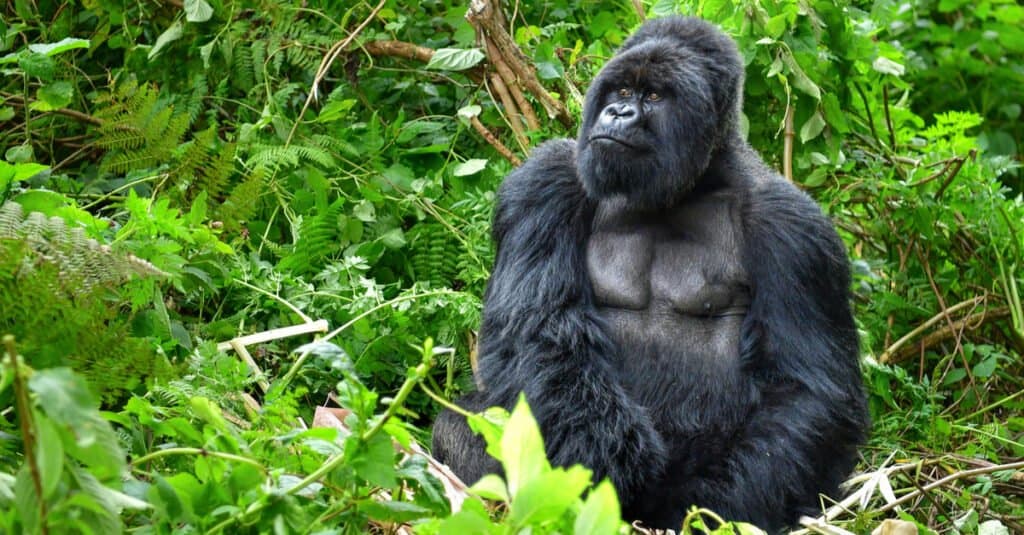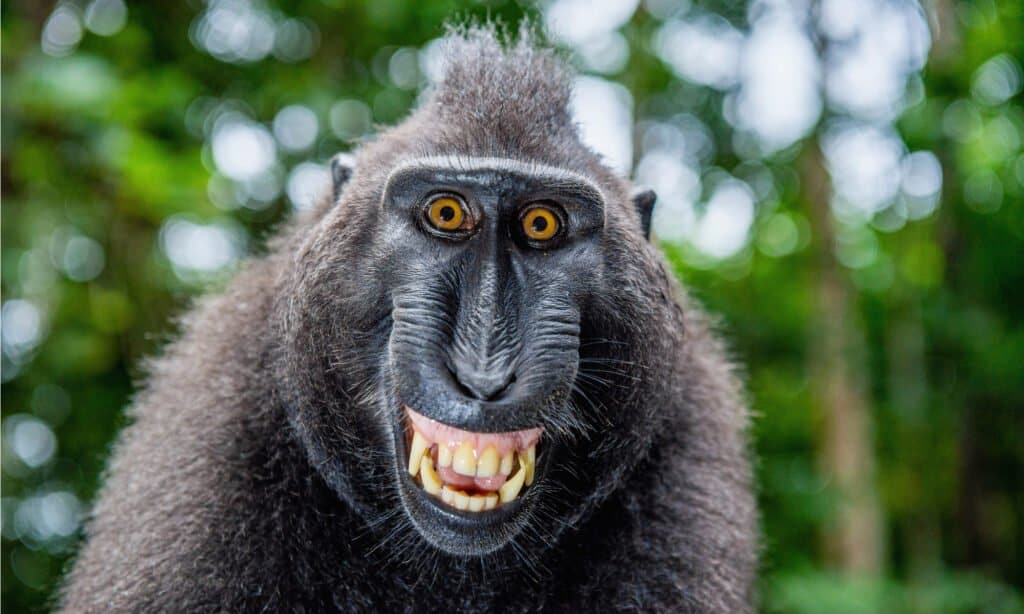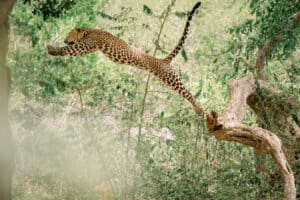Enjoy these 5 Incredible videos of monkeys laughing and find out why they do it. Is it true that monkeys laugh? Absolutely! But even if they don’t sound like people, many of their vocalizations sound happy and are recognizable as pleasurable. View these videos of monkeys laughing and then find out why they laugh and what situations cause laughter-type reactions.
1. Baby Baboon – Video of Monkey Laughing
Baboons have a sense of humor as you can see in this short video. Here, you see how much fun a baby baboon shows when someone is tickling him. The laughing is an added soundtrack since monkeys do not laugh out loud like humans. You can’t deny it, though! This little guy is still hilarious! You can watch this cutie here.
2. Video of Big Male Mandrill Baboon Making Faces
Funny videos of monkeys laughing include this huge male mandrill baboon who decided to entertain zoo visitors. In this unique video of a monkey laughing, he stands at the window, making faces at people. It seems that even monkeys have a sense of humor. Watch this funny guy here.

Mandrills are seen in videos of monkeys laughing because they also know how to have a bit of fun.
©Millie Bond – Copyright A-Z Animals
3. Cute Laughing Monkey in Video
This little monkey is having so much fun. I wonder what he is laughing at. You can look at this little cutie here.
4. Funny Video of Laughing Monkeys
No matter the species, videos of monkeys laughing are all over the place and never fail to amuse. This compilation shows a few different monkeys. They are laughing, playing, and doing random funny things as only monkeys can. Watch this video here.
5. Maisie the Baby Chimpanzee’s First Laughing Session on Video
Maisie is a baby chimpanzee living in the Maryland zoo. (Note: Chimpanzees are apes, not monkeys.) Humans are raising her but will soon reintroduce her to her family. Keepers captured this adorable little one’s first laughter on video. Watch it here.
Why Do Monkeys Laugh on Video or Otherwise?
Monkeys and apes like bonobos, chimpanzees, orangutans, and gorillas all laugh. They make a noise that sounds remarkably like human laughter when playing. However, these vocalizations can also sound a lot like screeching or even wheezing.
Great apes share ticklish areas with humans. They tend to vocalize laughter-like sounds when being tickled under the arms and on the belly. The laughing sounds they make sound like breathless giggles.

Gorillas
are one of the many primates that laugh when playing.
©Onyx9/Shutterstock.com
Social Awkwardness
Chimpanzees, like humans, use laughter to smooth over awkward situations. The University of Portsmouth Researchers in England studied four chimpanzee colonies in captivity. The researchers documented over 600 instances of laughter. Most of this was spontaneous laughter and lasted for a few minutes at the very least.
It is also natural to see these primates laughing with their human caretakers. Laughter is especially noticeable when they are playing or being tickled. Laughing means “I am having fun” and will prolong playtime. Laughter is often used as a “social lubricant” to make an awkward situation less uncomfortable. This behavior is present in both humans and monkeys.
Distinctive Emotional Expressions
In many cases, chimps aren’t just mimicking the expressions of other animals. Instead, they use distinctive emotional expressions. This conduct is usually to gain social advantages, like playtime or grooming.
One of the world’s most famous lowland gorillas, Koko used to laugh at her keepers’ clumsiness. Koko also had very distinctive laughing sounds for her favorite visitors. She loved to laugh and did it quite often.
Marina Davila Ross, a United Kingdom psychiatrist, conducted what she calls “tickle experiments” on young monkeys. All of these babies and youngsters showed “tickle-induced vocalizations” or laughter. And all of them showed it as a way to continue the playtime.
To Continue Play
Some types of play behavior may look like fighting. This display may prompt an animal to vocalize to keep the situation under control. In this instance, monkeys may make laughter-like sounds to ensure their playmates that everything is still under control.
Laughter is an expression of an individual’s emotions, which is a trait that people share with monkeys. Although essential for existence, laughter is a novelty that makes us realize the true meaning of life.
Fear Grin
Monkeys and humans will sometimes smile or even laugh in a scary situation. This reaction is very human. But why do it at all?
Are we making an effort to fix the problem? Or are we trying to convince everyone, even our attacker, that everything is okay? This reaction is called “fear grinning.”
“Fear grins” are among the most horrifying human reactions. When things turn awkward socially, most humans automatically sink into it. They slip into a blank-eyed smile that suggests the disagreement has nothing to do with them.
Fear grinning has been observed in monkeys as well. “Monkeys don’t always display their teeth in the same manner as humans do.” However, Signe Preuschoft, a primatologist, observed rhesus macaques in her research and noted that they frequently displayed their teeth during social interactions.
Conflict and the Fear Grin
It did not indicate the start of a conflict. Most of the time, it took place when there was a conflict between the more powerful and less influential group members. The smile came from the less dominant monkey, which frequently made the aggressive monkey much friendlier.
No Weapons Required
The macaques displayed no weapons. Instead, they were putting on a show of submission to the more powerful member. They grinned when danger appeared and often even after the situation was resolved.

Grins are sometimes grimaces but this Macaque looks like a monkey that is laughing at life.
©Sergey Uryadnikov/Shutterstock.com
Grins Are More Than Displays of Fear
Scientists observed that the smile wasn’t only employed in times of adversity. The monkeys readily exchanged smiles while engaging in friendly daily activities. Humans have modified that smile to express approval, joy, compassion, or sympathy, turning it into a more expressive form of communication. But even in dangerous circumstances, a smile can still appear. We make an effort to calm down anyone we perceive to be complicated.
Adaptability
Funny videos of monkeys laughing are an excellent informational and educational source. In some videos you can see unusual instances of smiling. Some of these cases show that smiling seems to be the only sensible response to a situation or a person. For example, monkeys use this instinct to recover from their mistakes and to survive in the wild. Monkeys are one of the best examples of humanlike smiling because they use it to make themselves look more approachable and likable.
In short, we see that laughter isn’t an exclusively human response. Monkeys and other mammals often laugh and laugh in the absence of humans. Parrots, chimpanzees, and dogs often laugh as well. Their laughter may not look or sound like ours, but it is definitely laughter. While for us, laughter can be more complex than simple joy, in most mammals, laughter involves surprise, a play on words, or a sense of humor.
The photo featured at the top of this post is © Gabi Siebenhuehner/Shutterstock.com
Thank you for reading! Have some feedback for us? Contact the AZ Animals editorial team.







